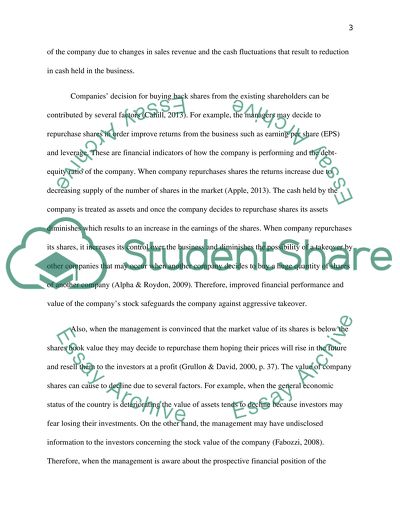Cite this document
(“Share Buyback: Apple Case Study Essay Example | Topics and Well Written Essays - 2500 words”, n.d.)
Retrieved from https://studentshare.org/finance-accounting/1668269-share-buyback
Retrieved from https://studentshare.org/finance-accounting/1668269-share-buyback
(Share Buyback: Apple Case Study Essay Example | Topics and Well Written Essays - 2500 Words)
https://studentshare.org/finance-accounting/1668269-share-buyback.
https://studentshare.org/finance-accounting/1668269-share-buyback.
“Share Buyback: Apple Case Study Essay Example | Topics and Well Written Essays - 2500 Words”, n.d. https://studentshare.org/finance-accounting/1668269-share-buyback.


